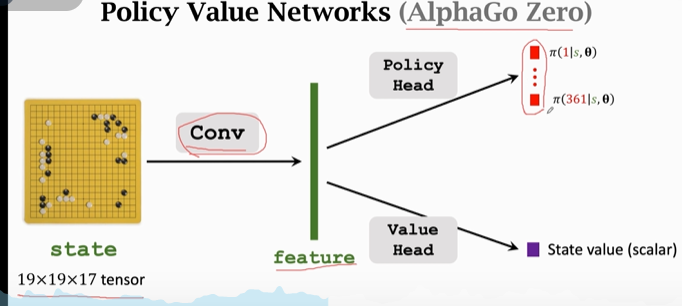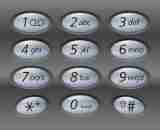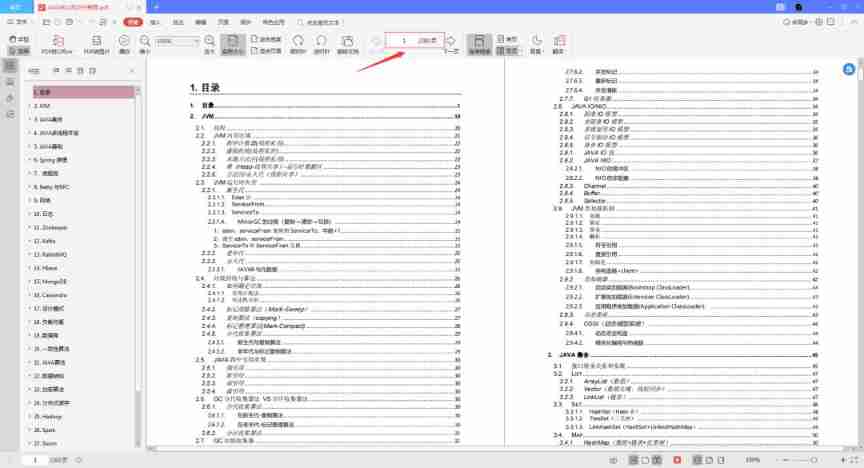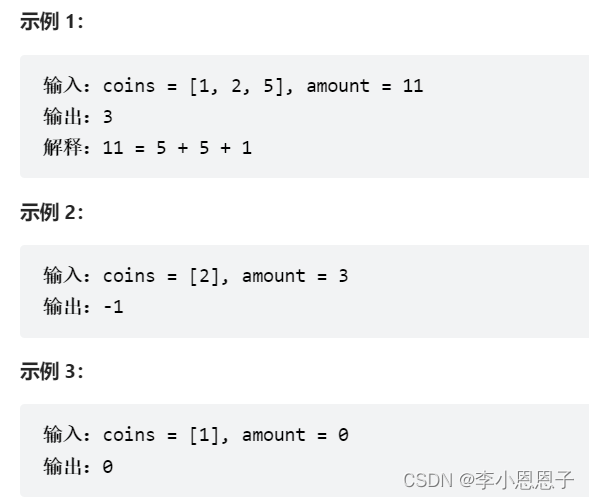当前位置:网站首页>Redistemplate common collection instructions opsforzset (VI)
Redistemplate common collection instructions opsforzset (VI)
2022-07-06 21:21:00 【Archie_ java】
The basic configuration has been introduced in the previous 《RedisTemplate Instructions for common sets ( One )]》 Has been introduced in , Now let's introduce it directly opsForZSet() Use of methods :
1、add(K key, V value, double score)
Add the element to the variable and specify the score of the element .
redisTemplate.opsForZSet().add("zSetValue","A",1);
redisTemplate.opsForZSet().add("zSetValue","B",3);
redisTemplate.opsForZSet().add("zSetValue","C",2);
redisTemplate.opsForZSet().add("zSetValue","D",5);
2、range(K key, long start, long end)
Get the element of the specified interval of the variable .
Set zSetValue = redisTemplate.opsForZSet().range("zSetValue",0,-1);
System.out.println(" adopt range(K key, long start, long end) Method to get the element of the specified interval :" + zSetValue);
3、rangeByLex(K key, RedisZSetCommands.Range range)
Used to obtain information that meets the requirements of non - score Sort value of . This sort can only be used if there are the same scores , If there are different scores, the return value is uncertain .
RedisZSetCommands.Range range = new RedisZSetCommands.Range();
//range.gt("A");
range.lt("D");
zSetValue = redisTemplate.opsForZSet().rangeByLex("zSetValue", range);
System.out.println(" adopt rangeByLex(K key, RedisZSetCommands.Range range) Method to obtain a non score Sort value element of :" + zSetValue);
4、rangeByLex(K key, RedisZSetCommands.Range range, RedisZSetCommands.Limit limit)
Used to obtain information that meets the requirements of non - score Set the length sorting value starting from the subscript .
RedisZSetCommands.Limit limit = new RedisZSetCommands.Limit();
limit.count(2);
// Starting subscript is 0
limit.offset(1);
zSetValue = redisTemplate.opsForZSet().rangeByLex("zSetValue", range,limit);
System.out.println(" adopt rangeByLex(K key, RedisZSetCommands.Range range, RedisZSetCommands.Limit limit) Method to obtain a non score Sort value element of :" + zSetValue);
5、add(K key, Set<ZSetOperations.TypedTuple> tuples)
adopt TypedTuple How to add data .
ZSetOperations.TypedTuple<Object> typedTuple1 = new DefaultTypedTuple<Object>("E",6.0);
ZSetOperations.TypedTuple<Object> typedTuple2 = new DefaultTypedTuple<Object>("F",7.0);
ZSetOperations.TypedTuple<Object> typedTuple3 = new DefaultTypedTuple<Object>("G",5.0);
Set<ZSetOperations.TypedTuple<Object>> typedTupleSet = new HashSet<ZSetOperations.TypedTuple<Object>>();
typedTupleSet.add(typedTuple1);
typedTupleSet.add(typedTuple2);
typedTupleSet.add(typedTuple3);
redisTemplate.opsForZSet().add("typedTupleSet",typedTupleSet);
zSetValue = redisTemplate.opsForZSet().range("typedTupleSet",0,-1);
System.out.println(" adopt add(K key, Set<ZSetOperations.TypedTuple<V>> tuples) Method add element :" + zSetValue);
6、rangeByScore(K key, double min, double max)
By setup score Get interval value .
zSetValue = redisTemplate.opsForZSet().rangeByScore("zSetValue",1,2);
System.out.println(" adopt rangeByScore(K key, double min, double max) Method according to the set score Get interval value :" + zSetValue);
7、rangeByScore(K key, double min, double max,long offset, long count)
By setup score Get the interval value and get the final value from the given subscript and given length .
zSetValue = redisTemplate.opsForZSet().rangeByScore("zSetValue",1,5,1,3);
System.out.println(" adopt rangeByScore(K key, double min, double max, long offset, long count) Method according to the set score Get interval value :" + zSetValue);
8、rangeWithScores(K key, long start, long end)
obtain RedisZSetCommands.Tuples The interval value of .
Set<ZSetOperations.TypedTuple<Object>> typedTupleSet = redisTemplate.opsForZSet().rangeWithScores("typedTupleSet",1,3);
Iterator<ZSetOperations.TypedTuple<Object>> iterator = typedTupleSet.iterator();
while (iterator.hasNext()){
ZSetOperations.TypedTuple<Object> typedTuple = iterator.next();
Object value = typedTuple.getValue();
double score = typedTuple.getScore();
System.out.println(" adopt rangeWithScores(K key, long start, long end) Method to get RedisZSetCommands.Tuples The interval value of :" + value + "---->" + score );
}
9、rangeByScoreWithScores(K key, double min, double max)
obtain RedisZSetCommands.Tuples The interval value of passes through the score .
Set<ZSetOperations.TypedTuple<Object>> typedTupleSet = redisTemplate.opsForZSet().rangeByScoreWithScores("typedTupleSet",5,8);
iterator = typedTupleSet.iterator();
while (iterator.hasNext()){
ZSetOperations.TypedTuple<Object> typedTuple = iterator.next();
Object value = typedTuple.getValue();
double score = typedTuple.getScore();
System.out.println(" adopt rangeByScoreWithScores(K key, double min, double max) Method to get RedisZSetCommands.Tuples The interval value of passes through the score :" + value + "---->" + score );
}
10、rangeByScoreWithScores(K key, double min, double max, long offset, long count)
obtain RedisZSetCommands.Tuples The interval value of gets the final value from the given subscript and given length through the score .
Set<ZSetOperations.TypedTuple<Object>> typedTupleSet = redisTemplate.opsForZSet().rangeByScoreWithScores("typedTupleSet",5,8,1,1);
iterator = typedTupleSet.iterator();
while (iterator.hasNext()){
ZSetOperations.TypedTuple<Object> typedTuple = iterator.next();
Object value = typedTuple.getValue();
double score = typedTuple.getScore();
System.out.println(" adopt rangeByScoreWithScores(K key, double min, double max, long offset, long count) Method to get RedisZSetCommands.Tuples The interval value of gets the final value from the given subscript and given length through the score :" + value + "---->" + score );
}
11、count(K key, double min, double max)
Get the number of interval values .
long count = redisTemplate.opsForZSet().count("zSetValue",1,5);
System.out.println(" adopt count(K key, double min, double max) Method to obtain the number of interval values :" + count);
12、rank(K key, Object o)
Get the index of the element in the variable , The starting position of the subscript is 0.
long index = redisTemplate.opsForZSet().rank("zSetValue","B");
System.out.println(" adopt rank(K key, Object o) Method to get the index of the element in the variable :" + index);
13、scan(K key, ScanOptions options)
Match to get key value pairs ,ScanOptions.NONE To get all key value pairs ;ScanOptions.scanOptions().match(“C”).build() Match to get the key map1 The key/value pair , No fuzzy matching .
//Cursor<Object> cursor = redisTemplate.opsForSet().scan("setValue", ScanOptions.NONE);
Cursor<ZSetOperations.TypedTuple<Object>> cursor = redisTemplate.opsForZSet().scan("zSetValue", ScanOptions.NONE);
while (cursor.hasNext()){
ZSetOperations.TypedTuple<Object> typedTuple = cursor.next();
System.out.println(" adopt scan(K key, ScanOptions options) Method to get the matching element :" + typedTuple.getValue() + "--->" + typedTuple.getScore());
}
14、score(K key, Object o)
Get the score of the element .
double score = redisTemplate.opsForZSet().score("zSetValue","B");
System.out.println(" adopt score(K key, Object o) Method to get the score of the element :" + score);
15、zCard(K key)
Get the number of elements in the variable .
long zCard = redisTemplate.opsForZSet().zCard("zSetValue");
System.out.println(" adopt zCard(K key) Method to get the length of the variable :" + zCard);
16、incrementScore(K key, V value, double delta)
Modify the score of the element in the variable .
double incrementScore = redisTemplate.opsForZSet().incrementScore("zSetValue","C",5);
System.out.print(" adopt incrementScore(K key, V value, double delta) Method to modify the score of the element in the variable :" + incrementScore);
score = redisTemplate.opsForZSet().score("zSetValue","C");
System.out.print(", Get the score of the element after modification :" + score);
zSetValue = redisTemplate.opsForZSet().range("zSetValue",0,-1);
System.out.println(", Elements sorted after modification :" + zSetValue);
17、reverseRange(K key, long start, long end)
Arranges the elements of the specified interval in reverse order of the index .
zSetValue = redisTemplate.opsForZSet().reverseRange("zSetValue",0,-1);
System.out.println(" adopt reverseRange(K key, long start, long end) Method to arrange elements in reverse order :" + zSetValue);
18、reverseRangeByScore(K key, double min, double max)
Arrange the elements of the specified score range in reverse order .
zSetValue = redisTemplate.opsForZSet().reverseRangeByScore("zSetValue",1,5);
System.out.println(" adopt reverseRangeByScore(K key, double min, double max) Method to arrange the elements of the specified score interval in reverse order :" + zSetValue);
19、reverseRangeByScore(K key, double min, double max, long offset, long count)
Arrange the elements in reverse order from a given subscript and a given length score interval .
zSetValue = redisTemplate.opsForZSet().reverseRangeByScore("zSetValue",1,5,1,2);
System.out.println(" adopt reverseRangeByScore(K key, double min, double max, long offset, long count) Methods arrange the elements in reverse order from a given subscript and a given length score interval :" + zSetValue);
20、reverseRangeByScoreWithScores(K key, double min, double max)
Sort in reverse order to get RedisZSetCommands.Tuples The score interval value of .
Set<ZSetOperations.TypedTuple<Object>> typedTupleSet = redisTemplate.opsForZSet().reverseRangeByScoreWithScores("zSetValue",1,5);
iterator = typedTupleSet.iterator();
while (iterator.hasNext()){
ZSetOperations.TypedTuple<Object> typedTuple = iterator.next();
Object value = typedTuple.getValue();
double score1 = typedTuple.getScore();
System.out.println(" adopt reverseRangeByScoreWithScores(K key, double min, double max) Methods reverse order to get RedisZSetCommands.Tuples The interval value of :" + value + "---->" + score1 );
}
21、reverseRangeByScoreWithScores(K key, double min, double max, long offset, long count)
Sort in reverse order to get RedisZSetCommands.Tuples The interval value from a given subscript and a given length score .
Set<ZSetOperations.TypedTuple<Object>> typedTupleSet = redisTemplate.opsForZSet().reverseRangeByScoreWithScores("zSetValue",1,5,1,2);
iterator = typedTupleSet.iterator();
while (iterator.hasNext()){
ZSetOperations.TypedTuple<Object> typedTuple = iterator.next();
Object value = typedTuple.getValue();
double score1 = typedTuple.getScore();
System.out.println(" adopt reverseRangeByScoreWithScores(K key, double min, double max, long offset, long count) Methods reverse order to get RedisZSetCommands.Tuples From the given subscript and the given length interval value :" + value + "---->" + score1 );
}
22、reverseRangeWithScores(K key, long start, long end)
Index the interval values in reverse order .
Set<ZSetOperations.TypedTuple<Object>> typedTupleSet = redisTemplate.opsForZSet().reverseRangeWithScores("zSetValue",1,5);
iterator = typedTupleSet.iterator();
while (iterator.hasNext()){
ZSetOperations.TypedTuple<Object> typedTuple = iterator.next();
Object value = typedTuple.getValue();
double score1 = typedTuple.getScore();
System.out.println(" adopt reverseRangeWithScores(K key, long start, long end) Methods index the interval values in reverse order :" + value + "----->" + score1);
}
23、reverseRank(K key, Object o)
Get the index value in reverse order .
long reverseRank = redisTemplate.opsForZSet().reverseRank("zSetValue","B");
System.out.println(" adopt reverseRank(K key, Object o) Get the index value in reverse order :" + reverseRank);
24、intersectAndStore(K key, K otherKey, K destKey)
obtain 2 The intersection of variables is stored in the 3 In a variable .
redisTemplate.opsForZSet().intersectAndStore("zSetValue","typedTupleSet","intersectSet");
zSetValue = redisTemplate.opsForZSet().range("intersectSet",0,-1);
System.out.println(" adopt intersectAndStore(K key, K otherKey, K destKey) Method to get 2 The intersection of variables is stored in the 3 In a variable :" + zSetValue);
25、intersectAndStore(K key, Collection otherKeys, K destKey)
Get the intersection of multiple variables and store it in the 3 In a variable .
List list = new ArrayList();
list.add("typedTupleSet");
redisTemplate.opsForZSet().intersectAndStore("zSetValue",list,"intersectListSet");
zSetValue = redisTemplate.opsForZSet().range("intersectListSet",0,-1);
System.out.println(" adopt intersectAndStore(K key, Collection<K> otherKeys, K destKey) Method to obtain the intersection of multiple variables and store it in the 3 In a variable :" + zSetValue);
26、unionAndStore(K key, K otherKey, K destKey)
obtain 2 The set of variables is stored in the 3 In a variable .
redisTemplate.opsForZSet().unionAndStore("zSetValue","typedTupleSet","unionSet");
zSetValue = redisTemplate.opsForZSet().range("unionSet",0,-1);
System.out.println(" adopt unionAndStore(K key, K otherKey, K destKey) Method to get 2 The intersection of variables is stored in the 3 In a variable :" + zSetValue);
27、unionAndStore(K key, Collection otherKeys, K destKey)
Get the collection of multiple variables and store it in the 3 In a variable .
redisTemplate.opsForZSet().unionAndStore("zSetValue",list,"unionListSet");
zSetValue = redisTemplate.opsForZSet().range("unionListSet",0,-1);
System.out.println(" adopt unionAndStore(K key, Collection<K> otherKeys, K destKey) Method to obtain the intersection of multiple variables and store it in the 3 In a variable :" + zSetValue);
28、remove(K key, Object… values)
Remove elements in batches according to element values .
long removeCount = redisTemplate.opsForZSet().remove("unionListSet","A","B");
zSetValue = redisTemplate.opsForZSet().range("unionListSet",0,-1);
System.out.print(" adopt remove(K key, Object... values) Method to remove the number of elements :" + removeCount);
System.out.println(", The remaining elements after removal :" + zSetValue);
29、removeRangeByScore(K key, double min, double max)
Remove the interval element according to the score .
removeCount = redisTemplate.opsForZSet().removeRangeByScore("unionListSet",3,5);
zSetValue = redisTemplate.opsForZSet().range("unionListSet",0,-1);
System.out.print(" adopt removeRangeByScore(K key, double min, double max) Method to remove the number of elements :" + removeCount);
System.out.println(", The remaining elements after removal :" + zSetValue);
30、removeRange(K key, long start, long end)
Remove the interval element according to the index value .
removeCount = redisTemplate.opsForZSet().removeRange("unionListSet",3,5);
zSetValue = redisTemplate.opsForZSet().range("unionListSet",0,-1);
System.out.print(" adopt removeRange(K key, long start, long end) Method to remove the number of elements :" + removeCount);
System.out.println(", The remaining elements after removal :" + zSetValue);
Here it is ,RedisTemplate.java Class related collection operations are introduced . Students who need to download the source code can download it in the file I uploaded , It can also be in https://github.com/422518490/springRedisTest.git This github Download above , At the same time, the document description is provided in the uploaded file .
边栏推荐
- Vim 基本配置和经常使用的命令
- 14年本科毕业,转行软件测试,薪资13.5K
- [in depth learning] pytorch 1.12 was released, officially supporting Apple M1 chip GPU acceleration and repairing many bugs
- Absolute primes (C language)
- Forward maximum matching method
- 966 minimum path sum
- Why do job hopping take more than promotion?
- 防火墙基础之外网服务器区部署和双机热备
- Is it profitable to host an Olympic Games?
- Nodejs教程之Expressjs一篇文章快速入门
猜你喜欢

Reinforcement learning - learning notes 5 | alphago

for循环中break与continue的区别——break-完全结束循环 & continue-终止本次循环

967- letter combination of telephone number
![[redis design and implementation] part I: summary of redis data structure and objects](/img/2e/b147aa1e23757519a5d049c88113fe.png)
[redis design and implementation] part I: summary of redis data structure and objects

20220211 failure - maximum amount of data supported by mongodb

Is this the feeling of being spoiled by bytes?

Is it profitable to host an Olympic Games?

【力扣刷题】一维动态规划记录(53零钱兑换、300最长递增子序列、53最大子数组和)

【力扣刷题】32. 最长有效括号

Reference frame generation based on deep learning
随机推荐
PG basics -- Logical Structure Management (transaction)
R language visualizes the relationship between more than two classification (category) variables, uses mosaic function in VCD package to create mosaic plots, and visualizes the relationship between tw
Opencv learning example code 3.2.3 image binarization
14年本科毕业,转行软件测试,薪资13.5K
Set up a time server
WEB功能测试说明
JS according to the Chinese Alphabet (province) or according to the English alphabet - Za sort &az sort
967- letter combination of telephone number
[interpretation of the paper] machine learning technology for Cataract Classification / classification
One line by line explanation of the source code of anchor free series network yolox (a total of ten articles, you can change the network at will after reading it, if you won't complain to me)
ICML 2022 | Flowformer: 任务通用的线性复杂度Transformer
js中,字符串和数组互转(二)——数组转为字符串的方法
The difference between break and continue in the for loop -- break completely end the loop & continue terminate this loop
基于深度学习的参考帧生成
Ravendb starts -- document metadata
每个程序员必须掌握的常用英语词汇(建议收藏)
代理和反向代理
R language for text mining Part4 text classification
Swagger UI tutorial API document artifact
[redis design and implementation] part I: summary of redis data structure and objects